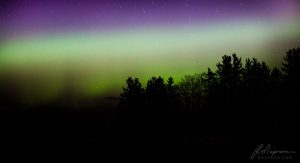The new year ushered in new rules on light bulbs. Starting Jan. 1, the federal government banned the manufacture and import of 75- and 100-watt incandescent bulbs.
While cheap to buy, the bulbs’ true costs are in their inefficiency. Up to 90 per cent of the energy they use ends up as wasted heat. They produce so much heat that until recently, Easy-Bake Ovens used the 100-watt bulbs to bake itsy-bitsy cookies and bite-sized red velvet cakes. Similar light bulb efficiency standards that went into effect last year in the United States forced Hasbro into a bulb-less redesign.
So if you are fond of the warm glow traditional incandescent bulbs produce (or have an Easy-Bake Oven predating 2011), you better stock up on the bulbs now while stores still have stock remaining. Otherwise, here are some light bulb options.
Halogen incandescent bulbs
Like standard bulbs, halogens use a tungsten filament that glows white-hot when electricity passes through it. But because of the halogen gas surrounding the filament, the bulb can last up to three times as long as their Edison-invented ancestors while using around 28 per cent less energy. They can produce a tremendous amount of heat though, more than regular incandescents. And they cost more to buy.
Compact fluorescent light bulbs (CFLs)
CFLs are usually associated with the harsh white light they cast. However, since their invention in the 1980s, producers have come a long way in giving them a more sunny look — without the sunny feeling of wasted heat. They use up to 75 per cent less energy and can last eight times longer than traditional bulbs, so they will cost you more to purchase, but save you money in the long run. Not all CFLs are dimmable, so be sure to check the package before you invest in one. Since they contain mercury, a toxic substance, “burnt out” compact fluorescents are not regular garbage. Much like paints and fertilizers, you should drop them off at your local hazardous waste disposal area.
Light emitting diodes (LEDs)
You’ve probably seen these outside of houses, decorating trees over the winter holidays. The household version of these bulbs can have a lifespan 25 times as long as a regular bulb and a higher price to match: anywhere from $10 to $30.
Lower wattage incandescent bulbs
Until Dec. 31, 2014, 40- and 60-watt incandescent bulbs will still be manufactured and sold.




